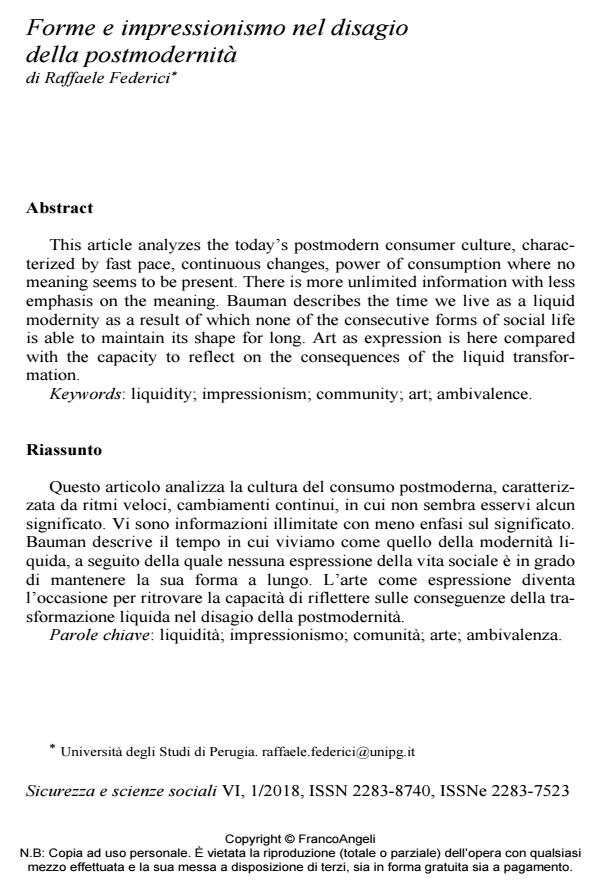Forme e impressionismo nel disagio della postmodernità
Journal title SICUREZZA E SCIENZE SOCIALI
Author/s Raffaele Federici
Publishing Year 2018 Issue 2018/1
Language Italian Pages 10 P. 65-74 File size 225 KB
DOI 10.3280/SISS2018-001007
DOI is like a bar code for intellectual property: to have more infomation
click here
Below, you can see the article first page
If you want to buy this article in PDF format, you can do it, following the instructions to buy download credits

FrancoAngeli is member of Publishers International Linking Association, Inc (PILA), a not-for-profit association which run the CrossRef service enabling links to and from online scholarly content.
This article analyzes the today’s postmodern consumer culture, characterized by fast pace, continuous changes, power of consumption where no meaning seems to be present. There is more unlimited information with less emphasis on the meaning. Bauman describes the time we live as a liquid modernity as a result of which none of the consecutive forms of social life is able to maintain its shape for long. Art as expression is here compared with the capacity to reflect on the consequences of the liquid transformation.
Keywords: Liquidity; impressionism; community; art; ambivalence
Raffaele Federici, Forme e impressionismo nel disagio della postmodernità in "SICUREZZA E SCIENZE SOCIALI" 1/2018, pp 65-74, DOI: 10.3280/SISS2018-001007